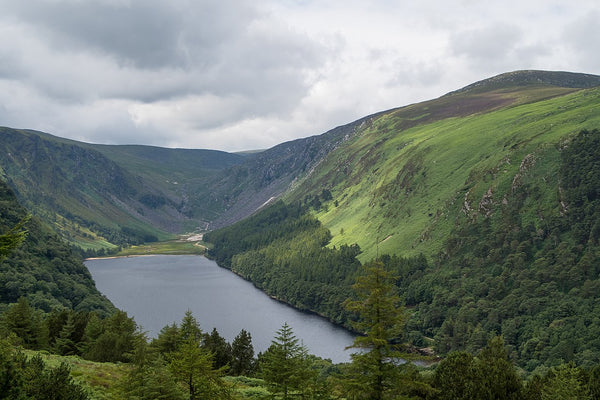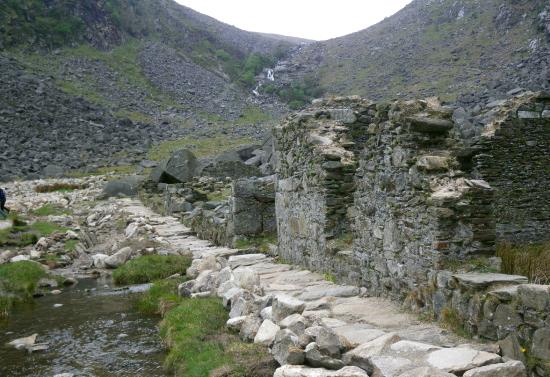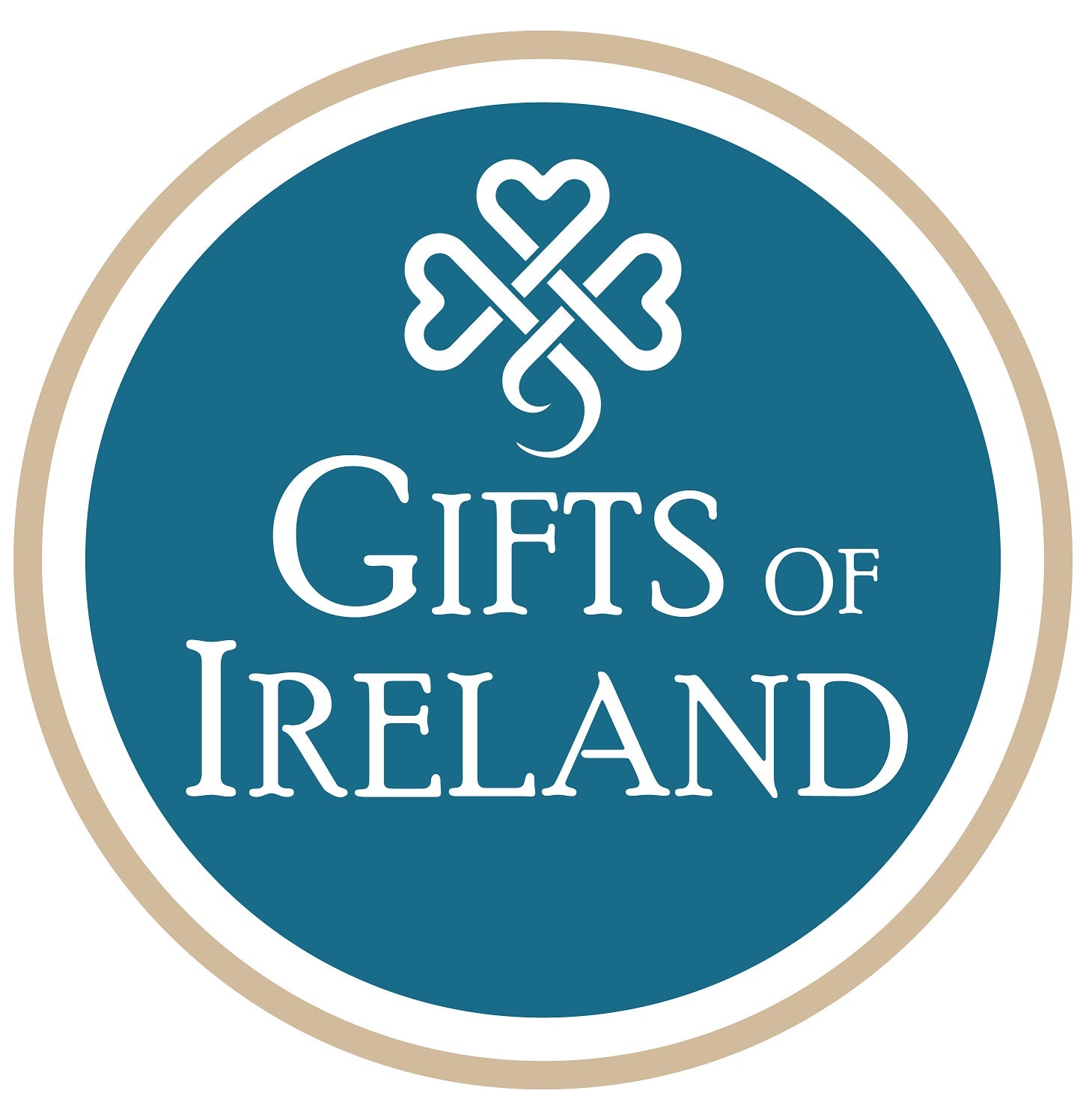Hi everyone, Aidan here, owner of Gifts of Ireland. I spent a great weekend in County Wicklow at the beautiful and historic Glendalough, and wanted to share it with you all.
The name Glendalough, or Gleann Dá Loch in Irish, means ‘Valley of two lakes.’ Tucked between the Wicklow Mountains, this is a special place to visit not just for its beauty, but for its rich history. The area is renowned for the early Medieval monastic settlement that once thrived here, founded in the 6th century by St Kevin. Kevin was a descendant of a ruling family in Leinster, the east of Ireland, and as a young boy he studied with three holy men. With them he visited Glendalough, and years later he returned with a small group of monks to found a monastery where the two rivers converge.

The Upper Lake
The Glendalough Upper Lake Carved by the melting ice of an ancient glacier, and runs to the west of Glendalough’s monastic site. There is a small rectangular church named Temple-na-Skellig on the southern shore, only accessible by boat and a series of steps. East of this small structure is a cave within the rockface called St. Kevin’s bed, which is said to have been a retreat for St. Kevin.
Mining is also an integral part of the history of County Wicklow. The four valleys of Glendalough, Glendasan, Glenmalure and Lough Dan share a rich mining heritage that dates back to at least the eighteenth century if not earlier. The ruins of this once thriving mining village can be seen at the top of the Camaderry Mountain, overlooking the Upper Lake. I was filled with such a feeling of awe to be looking at the remains of a site that was once so important and full of life.

Monastic Site
What you see in Glendalough today tells you only some of the area's fascinating story. The monastery also had workshops, areas for manuscript writing and copying, guest houses, an infirmary, farm buildings and dwellings for both the monks and laypeople. The buildings that you can see there today date from between the 10th and 12th centuries. Glendalough thrived as one of Ireland’s great ecclesiastical sites and schools of learning, surviving countless attacks from Vikings over the years until the Normans destroyed the monastery in 1214 A.D. It's amazing to picture the site as it was back then, a bustling hub of community and knowledge.

Glendalough was a popular pilgrimage site in medieval times up until the 20th century. It was even said that to be buried in Glendalough was as significant as being buried in Rome. Beginning at the Wicklow town of Hollywood (Cillín Chaoimhín, meaning ‘Kevin's Wood’), the St Kevin’s Way trail stretches for 30 kilometres, or about 18 miles, and traces St Kevin’s journey to the monastery. Trees carry great memory, history, and walking amongst them can take you right back to the past. They grow for hundreds of years where they witness waterfalls running dry, and new springs brought to life. The watch new visitors walk amongst them. Trees, especially in Ireland, are part of our cultural heritage and identity. A friend of mine helps those who are bereaved at the loss of a loved one to keep the memory of that person alive by planting a tree in dedicated to them. What a wonderful symbol of love that lasts for generations. His business is called Irish Memorial Trees.
Round Tower
The Round Tower stands about 30 metres high, with an entrance 3.5 metres from the base. It was used as a landmark for approaching visitors, a lookout for approaching foes and and as bell towers, but also served on occasion as a store-house and a refuge in times of attack.
St Kevin's Cross
St Kevin's Cross was carved from a single slab of granite stone. The arms of the cross stretch out over a metre in length and it stands at around 2.5 metres tall. The cross is an example of early Christian imagery being used alongside pagan symbolism. A circle is carved behind the arms of the cross, representing the sun and moon that the pagan people worshipped. It's said that anyone who can wrap their arms around the entire width of the cross body and close the circle by touching fingertips will have their wishes granted. So, when you visit, be sure to give it a go!
A day in Glendalough is such a special and enriching experience. I feel truly blessed to live in a country with such a rich story and lush landscapes. Anyone who visits Ireland simply has to visit the garden county and see for themselves this incredible historic site.
If you follow us on Instagram, you can see more pictures and videos from my trip, as well as other trips I take in the future.


Thank you for the history lesson. I love soaking up any & every bit of Irish history I can. I’ve been to Ireland twice and look forward to another much longer stay wo that I may learn more yet.
I enjoyed that mini tour I guess I missed it went I went to Ireland in Oct of this year too bad but I’ll be back love your videos